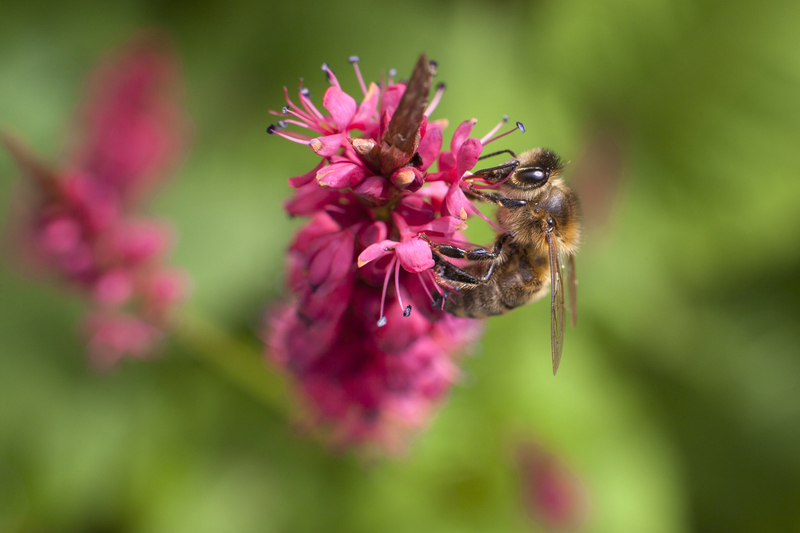Green Solutions for Eliminating a Stubborn Tree Stump
Have you just chopped down an old or diseased tree and now face the unsightly, stubborn stump left behind? Getting rid of a tree stump can be a challenge--but did you know you don't have to rely on harsh chemicals or heavy machinery? In this comprehensive guide, we explore green solutions for eliminating a stubborn tree stump, offering eco-friendly, effective methods that safeguard your yard's health and the environment alike.

Why Go Green When Removing Tree Stumps?
Conventional stump removal methods often involve toxic chemicals or gas-powered grinders, which can damage your soil, harm beneficial insects, or even contaminate groundwater. By choosing sustainable stump removal techniques, you:
- Protect your landscape's biodiversity
- Maintain soil health
- Reduce your ecological footprint
- Create opportunities for repurposing organic matter
Let's dive into the most effective green solutions for eliminating stubborn tree stumps, so you can restore the beauty and health of your landscape--the eco-friendly way!
Eco-Friendly Stump Removal: An Overview
There are several environmentally conscious strategies for removing a tree stump. Most green methods rely on natural decay, physical/manual labor, or leveraging the power of microorganisms. Here are the most effective techniques:
- Manual Removal
- Natural Decomposition
- Burning (where permitted & done safely)
- Biological Acceleration (using fungi or compost)
- Upcycling the Stump for Landscaping
Manual Stump Removal: Low-Tech and Low-Impact
One of the oldest and greenest techniques involves removing the stump by hand. This process requires patience and effort, but it leaves your soil undisturbed and avoids chemicals.
How to Remove a Tree Stump Manually:
- Gather Tools: You'll need a shovel, mattock, pruning saw, axe, and possibly a digging bar.
- Clear the Area: Remove rocks, debris, and soil from around the stump to expose the roots.
- Cut and Loosen Roots: Use your saw or axe to cut through the larger roots anchoring the stump.
- Wiggle and Remove: Rock the stump back and forth to loosen it. Continue digging and cutting until it comes free.
- Refill the Hole: Add compost or topsoil, and plant grass or wildflowers to restore your yard's appearance.
This method is labor-intensive but highly effective for small or medium stumps. For bigger, deeply-rooted stumps, manual removal alone may prove too challenging.
Natural Decomposition: Let Nature Do the Work
Allowing a tree stump to rot naturally is among the most sustainable approaches--mother nature's original solution! By encouraging decomposition, you not only get rid of the stump but also enrich your soil.
To speed up the process, follow these eco-friendly steps:
- Cut the Stump Low: Use a chainsaw or hand saw to trim the stump as close to the ground as possible.
- Drill Holes: Drill multiple holes (about 1 inch wide and 8-10 inches deep) in the top and sides of the stump.
- Add Nitrogen Sources: Fill the holes with nitrogen-rich materials--manure, blood meal, or a compost starter work well.
- Keep Moist: Water the area regularly to promote microbial activity.
- Cover with Organic Matter: Pile mulch, leaves, or compost on top to insulate and attract fungi and bacteria.
This method can take anywhere from several months to a few years, depending on the stump's size and wood type. For quicker green solutions, combine natural decay with the methods below.
Fungi and Mycelium: Accelerating Stump Decomposition Naturally
Harnessing the power of mushrooms and fungi is a cutting-edge, eco-conscious technique for eliminating stubborn tree stumps.
- Choose Rotting Fungi: Oyster mushrooms (Pleurotus ostreatus) are especially adept at breaking down lignin and cellulose.
- Inoculate the Stump: Drill holes, then insert mushroom plug spawn or sawdust spawn. Cover with moist straw and mulch.
- Water and Wait: Keep the stump moist but not waterlogged. Mushrooms will sprout within weeks or months and digest the stump over 1-2 years.
This solution not only gets rid of the stump naturally, but you'll also enjoy edible mushrooms and healthier soil! It's perfect for permaculture and organic gardening enthusiasts.
Compost and Soil Microbes: Turning a Stump into Black Gold
Another eco-friendly method is to create a "compost pile" over your stump. This technique uses aerobic decomposition processes to speed up decay:
- Build a mound of compost, kitchen scraps, grass clippings, and leaves over and around the stump.
- Maintain regular moisture and aerate occasionally with a pitchfork.
Within a year, depending on the stump's wood density, it will have rotted significantly, leaving rich, fertile soil in its place.
Green Stump Removal Methods: Safety and Local Regulations
Burning out a stump is a traditional practice, but it's only a green solution if conducted safely and legally. Many regions have strict ordinances against open burning. If you choose this route:
- Check local laws and obtain required permits.
- Drill holes and fill with kindling or charcoal.
- Never use accelerants or create large, open flames.
- Monitor the burn, and keep water or a fire extinguisher nearby.
Burning is less eco-friendly due to carbon emissions, but with care, it may be an option where other green solutions aren't feasible. As always, maintain safety first!
Reimagine, Repurpose: Creative Green Uses for Tree Stumps
Why remove the stump at all? If the stump isn't in the way, consider transforming it into a functional or decorative landscape feature:
- Planter or Fairy Garden: Hollow out the top for flowers, succulents, or whimsical miniature scenes.
- Natural Seat or Table: Smooth and seal the surface to create a rustic garden stool or side table.
- Support for Birdbaths or Feeders: Attract wildlife by placing feeders atop the stump.
- Insect Habitat: Allow the stump to decay, fostering beneficial beetles, solitary bees, and fungi.
Repurposing is the greenest solution of all! Converting the stump reduces waste and enriches your garden's biodiversity.
Sustainable Stump Prevention: Plan Ahead!
The best way to avoid stubborn stumps is to choose the right tree species and planting location. When planting new trees:
- Select native or non-invasive trees suited to your soil and climate.
- Allow adequate space for root growth.
- Hire certified arborists for safe, strategic removals if a tree must be felled.
Prevention reduces the need for removal and preserves your yard's natural balance.

Frequently Asked Questions About Eco-Friendly Stump Removal
How long do natural stump removal methods take?
Manual removal is usually immediate (after some hard work), while natural decay and fungal methods can span months to several years. The process depends on stump size, species, and climate conditions.
Are there organic stump removal products available?
Yes! Some brands offer natural stump removal products containing beneficial microbes or natural enzymes to hasten decomposition. Just be sure to avoid those with synthetic chemicals or pesticides.
Will tree stump removal harm my garden's wildlife?
When done using green solutions such as fungal inoculation, composting, or repurposing, stump removal can actually help support local wildlife and pollinators by providing safe habitat and nutrients.
Is it cheaper to remove a tree stump using eco-friendly methods?
Often yes--green solutions for eliminating a stubborn tree stump require minimal purchased materials and just some elbow grease and patience! Chemical and mechanical removal methods are typically more expensive.
Conclusion: Choose Green Solutions for Eliminating a Stubborn Tree Stump
Don't let a pesky stump blemish your landscape. Whether you're a DIY gardener or a homeowner keen on sustainability, the best green solutions for eliminating a stubborn tree stump combine nature, patience, and creativity. From manual techniques and microbial helpers to imaginative upcycling, these eco-friendly methods revive your garden and make a positive impact on our planet.
Restore your yard the natural way--choose green solutions for tree stump removal and let your garden thrive!

